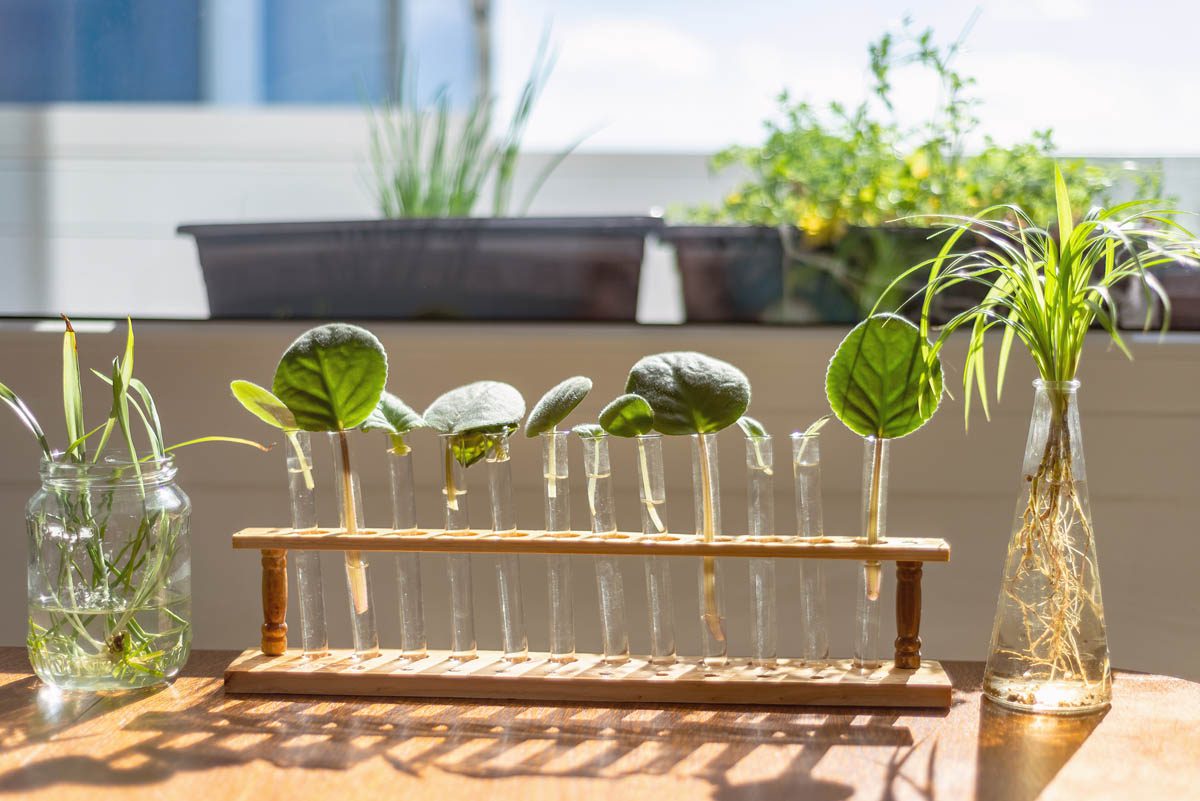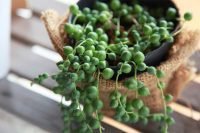Water propagation is one of the easiest ways to propagate plants. One of the advantages of water propagation is you can see when the plant has formed new roots, unlike soil propagated plants.
Identifying a node
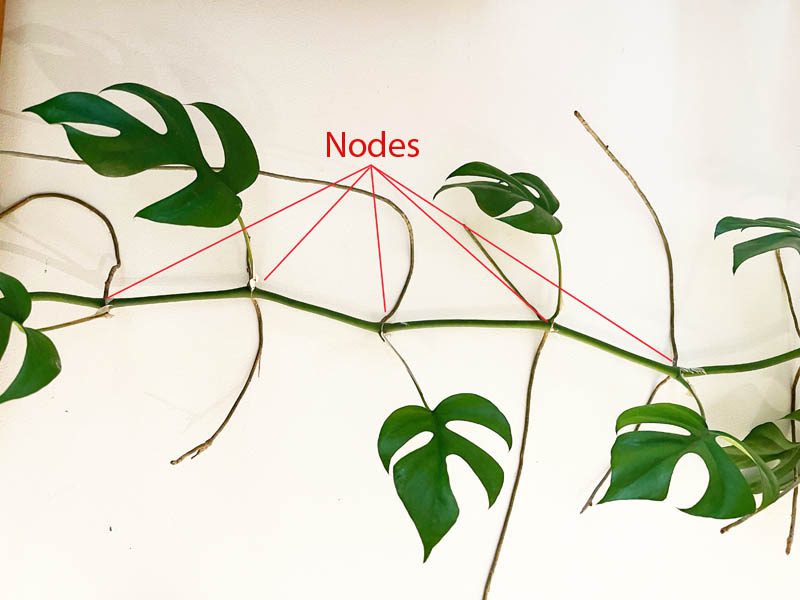
The key to propagation is in the stem node that contains hormones and meristematic cells which are undifferentiated stem cells capable of cell division. Cells in the meristem can develop into all tissues and organs that occur in plants forming roots, leaves, branches and aerial roots. If there is no visible leaf (such as bamboo), look for a swelling on the stem, this is where the node is), or a hard bump.
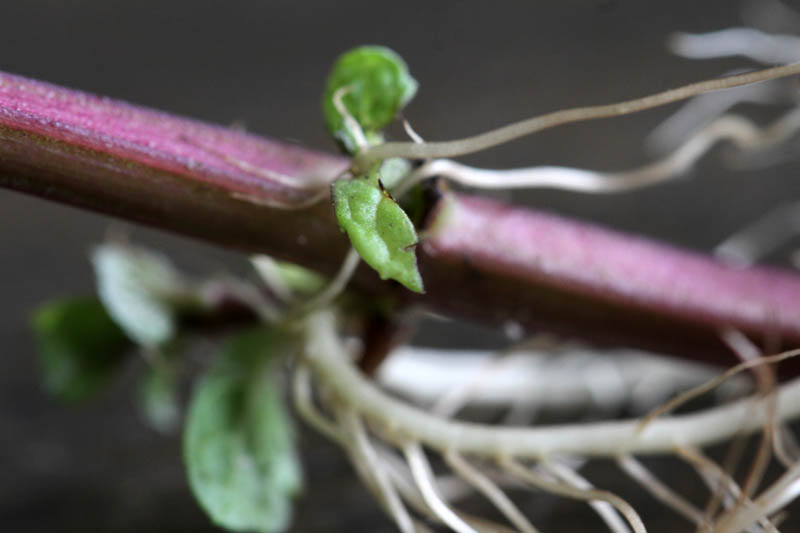
What you will need
- Water at room temperature
- Sharp scissors or shears (sterilised)
- Clear container
- Rubbing alcohol
- Rooting powder (optional)
Method
Clean your scissors or shears with hot and soapy water, dry and wipe over with rubbing alcohol to prevent introducing an infection to the cutting.
- Make a 7.5 cm (3 inches long) cutting at an angle, just below a node.
- Remove all of the leaves except the top one or two, this is to prevent the bottom leaves from being submerged in water, allow the plant to focus its energy on growing roots, and reduces the surface area of leaves, preventing the excess of water loss through evaporation. For larger cuttings (such as Monstera delicosa), cut the leaf in half.
- Place the cutting in a clean, transparent container in bright but indirect light.
- Replace with fresh water every two to three days.
- Once the roots are 7.5 cm (3 inches) long, the cutting can be potted.
Notes:
Some people like to dip the cutting in rooting hormones, honey or even cinnamon to enhance propagation. I recently ran an experiment with four mint cuttings (mint is super easy to propagate). This is how I treated each cutting:
- Honey
- Rooting (hormone) powder
- Cinnamon
- Nothing
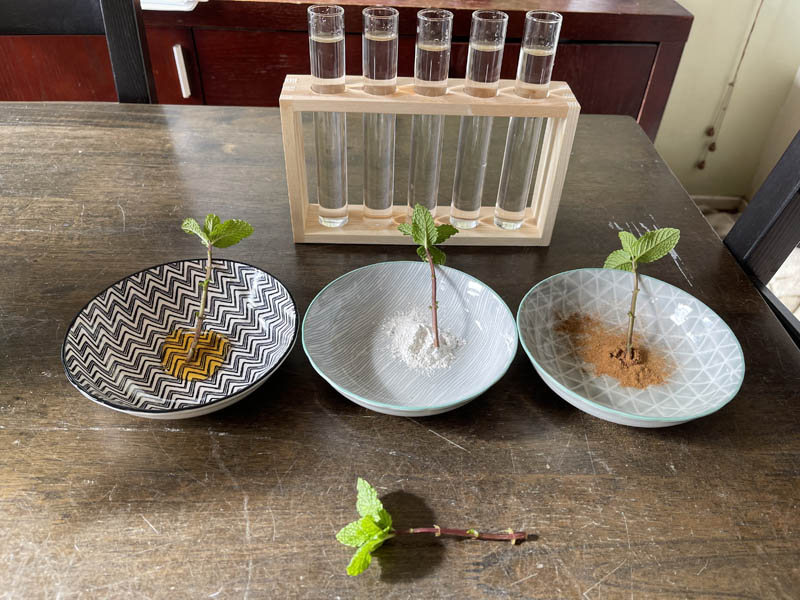
I had similar results from the honey, rooting powder and untreated, the only cutting which didn’t root was the one dipped in cinnamon.
The time it takes to produce roots can vary considerably, most easy-to-root plants will produce roots by the second or third week. But patience is the key.
What plants can you propagate in water?
The list of plants that can be propagated in water is endless.
- Monstera spp.
- Coleus
- Impatiens
- Rosemary
- Mint
- Basil
- Sage
- Thyme
- Lavender
- Begonia
- Pothos
- Spider plant
- ZZ plant
- String of pearls
- Arrowhead plant
- Geranium
- Snake plant
- Mini monstera
- Peperomia
- Chinese evergreen
- Purple heart
- Ivy
- Wandering jew
- Elderflower
- Euphorbia ‘star dust’
Frequently asked questions
Can you propagate from hardwood?
Yes, propagation is possible from hardwood. The images below is an elderflower cutting a fellow Instagram friend gave me. This cutting was a single branch, with no leaves. It was left outside in a bottle of water and the first shoot appeared 9 days later. Below is a photo of the cutting 30 days later.
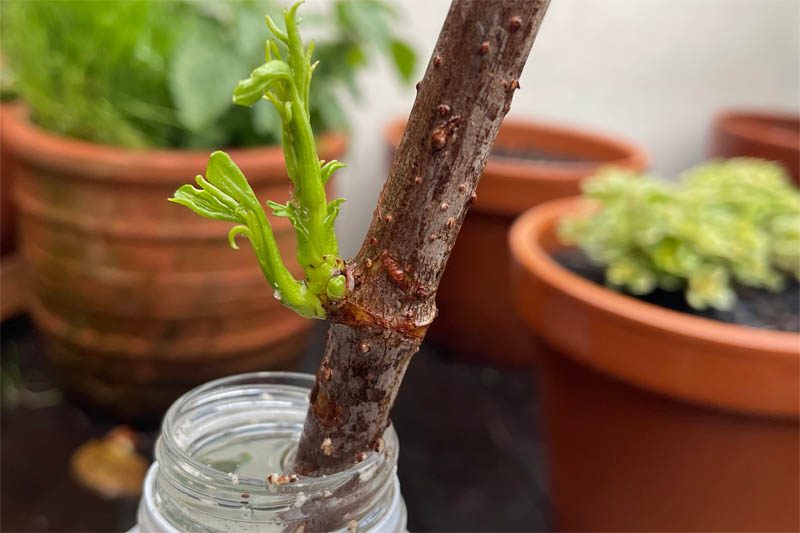
When should you propagate plants?
The best time to propagate soft stem cuttings is spring or summer, during the plant’s active growth phase. Hardwood cuttings should be propagated in autumn or winter.
Can you keep a plant in water indefinitely?
Yes, you can, but as water contains very few nutrients, it will need to be fed with a good-quality water-soluble fertiliser once the roots have formed. This is known as hydroponic growing.
How often do you change the water when propagating?
Plants quickly absorb nutrients in the water, and debris from the plant can slough off and rot, contaminating the water, therefore it is necessary to the water every 2 – 3 days, or if it becomes murky.
How long does it take for a plant to develop roots in water?
The time can vary, but generally, it takes between 2 – 3 weeks for a cutting to develop roots.
Julia is a writer and landscape consultant from Wollongong with a love of horticulture. She had been an avid gardener for over 30 years, collects rare variegated plants and is a home orchardist. Julia is passionate about learning and sharing her knowledge of plant propagation and plant toxicology. Whether it’s giving advice on landscape projects or sharing tips on growing, Julia enjoys helping people make their gardens flourish.
